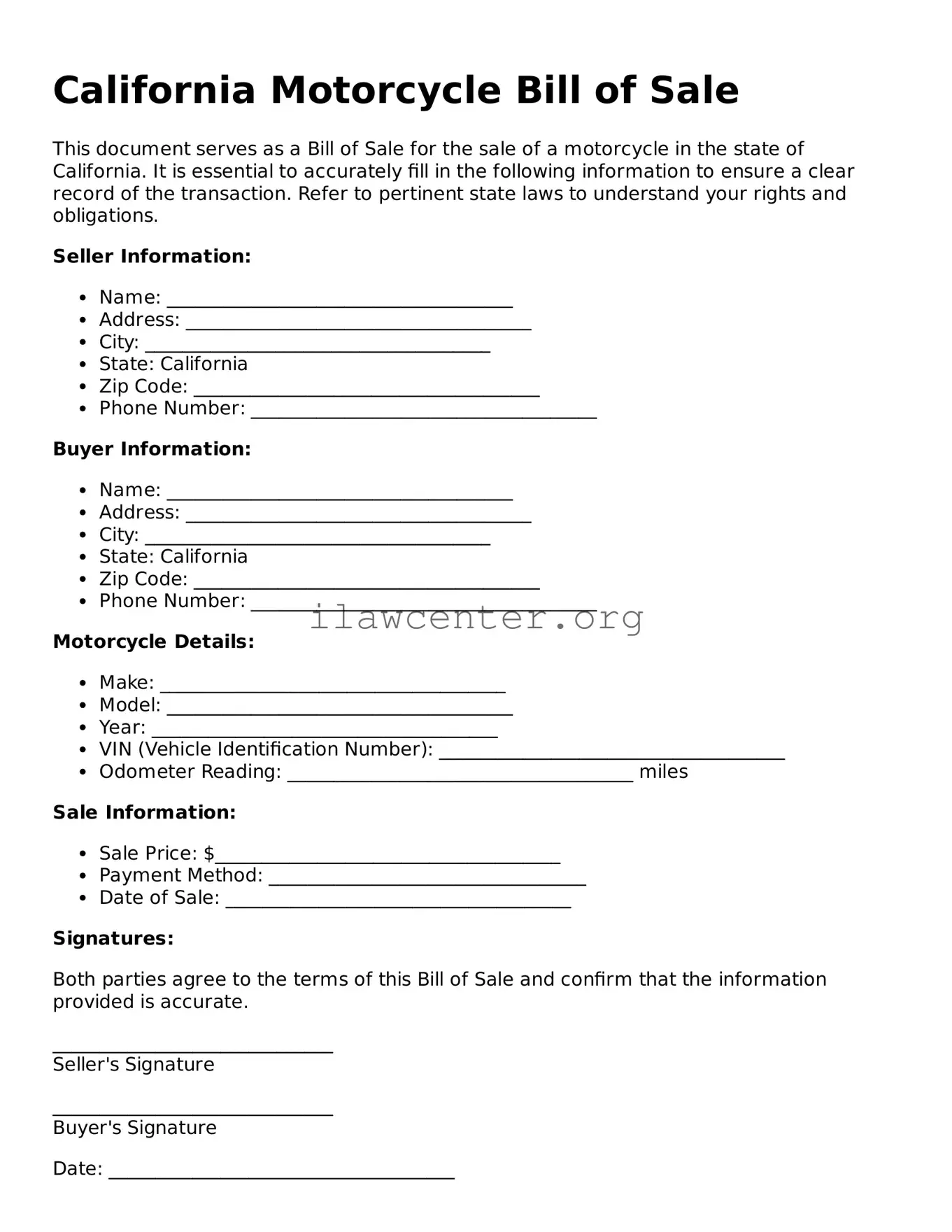Instructions on Utilizing California Motorcycle Bill of Sale
Filling out the California Motorcycle Bill of Sale form is an important step in the process of transferring ownership of a motorcycle. This document acts as a receipt for both the buyer and the seller, so it’s essential to complete it accurately. The following steps will guide you through the necessary information that needs to be included.
- Obtain the form: You can find the California Motorcycle Bill of Sale online or receive a copy from a local DMV office.
- Fill in the seller’s information: Include the full name, address, and contact number of the person selling the motorcycle.
- Enter the buyer’s information: Provide the buyer’s full name, address, and contact number.
- Describe the motorcycle: This detail should cover the make, model, year, color, and Vehicle Identification Number (VIN) of the motorcycle.
- Specify the sale price: Clearly write down the agreed-upon price of the motorcycle.
- Include the date of sale: Record the exact date when the transaction takes place.
- Signatures: Both the seller and the buyer must sign and date the document.
Once the form is completed, make sure that each party keeps a copy for their records. This document is essential for both registering the motorcycle under the new owner's name and establishing proof of purchase.
